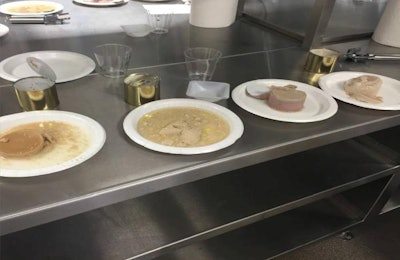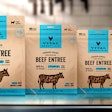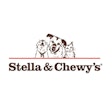
New proteins designed to supplement more natural pet foods were on display at Petfood Innovation Workshop.
On April 18, pet food professionals gathered at Kansas State University’s Olathe, Kansas, USA, campus for the workshop centered on meat and novel proteins that could be used to improve the shelf life, palatability, nutritional content and other aspects of traditional, extruded pet food as well as freeze-dried, baked and dehydrated treats. The event took place as part of Petfood Forum in Kansas City, Missouri, USA.
Attendees visited six workshops where companies in the industry – Darling Ingredients Inc., Extru-Tech Inc., The Peterson Co., The F.L. Emmert Co., Sensient Technologies Corp., APC Inc., Videka and Kalsec Inc. – showcased their products. Each demonstration displayed how a company’s product can be used to improve pet food and add more value for consumers as well as manufacturers. The companies emphasized how their products can be used to improve the quality of pet foods made with more natural, human food ingredients and less grains.
Plasma
APC demonstrated how plasma derived from beef blood can be used to thicken wet pet food and improve its nutritional value. Javier Polo, PhD, vice president of research and development, and Joy Campbell, PhD, senior director of research and development, spoke about new research suggesting the addition of blood plasma to pet food can improve digestibility as well as reduce fecal output. The research indicates the addition of plasma can improve overall gastrointestinal health in wet and dry pet food.
At the station, attendees mixed together a plasma solution to see how the additive works as a thickening agent. They also opened cans of substances mixed with wheat gluten and plasma. The cans mixed with plasma came out in a firm, gelatinous mass while those mixed with wheat gluten were comparatively watery and loose.
Gelatin
Darling Ingredients showcased how gelatin can be used to produce firmer dry kibble from extrusion and new, more durable pet treats. Using gelatin can allow manufacturers to make pet food with less fat, sugar and calories; improve textures and palatability of pet food; and create new treats with a chewable hardness and mechanical elasticity.
At the station, attendees used gelatin, ground meat and other ingredients to create a meat roll-up, a treat inspired by gelatinous fruit snacks. The treat displayed how gelatin can be used to create unique products for pets. The company is working with Kansas State to develop new “gummy” dog treats in the future.
Natural food coloring and flavors
Sensient exhibited its range of natural food colorings and ingredients for pet food. The supplier of food colorings for food, beverage and pet food industries stressed how its products can be used by companies looking to satisfy demand for more natural food products without sacrificing the colors and flavors consumers expect.
At its station, attendees used naturally colored ingredients to create a cheesy sweet potato dog treat and a kibble and gravy immunity blend. Both products showed how natural ingredients can be used instead of artificial ones to create vivid colors and flavors.
Oxidation
Videka and Kalsec demonstrated how antioxidants can be used to improve the quality of dry and wet pet food and extend its shelf life. Oxidation leads to the degradation of food quality and can cause pet food to go rancid over time. The supplements can reduce the oxidation of different fresh meats and slurries as well as extruded pet food.
Attendees sampled a chicken patty prepared with and without antioxidant additives produced by Videka and Kalsec and prepared a premix with the companies’ new antioxidant product Essentia. The product works well with formats like freeze-dried, dehydrated and baked products, the companies’ representatives said.
Protein concentrate and brewer’s yeast
Extru-Tech and the Peterson Co. demonstrated how high-protein powder concentrates can be used to improve the quality of extruded pet food, biscuits and treats. Attendees made a high-protein pet food biscuit using the powders.
F.L. Emmert exhibited how brewer’s yeast can be used as a primary protein source in food for dogs, cats and other species. The fungus can provide a combination of proteins, amino acids, vitamins and minerals in pet food. Attendees baked a dog biscuit made with brewer’s yeast, flour, molasses and other ingredients at the company’s station.
Petfood Innovation Workshop was held Monday, April 18 prior to Petfood Forum 2016. Petfood Forum 2016 takes place April 18-20 at the Kansas City Convention Center in Kansas City, Missouri, USA.















